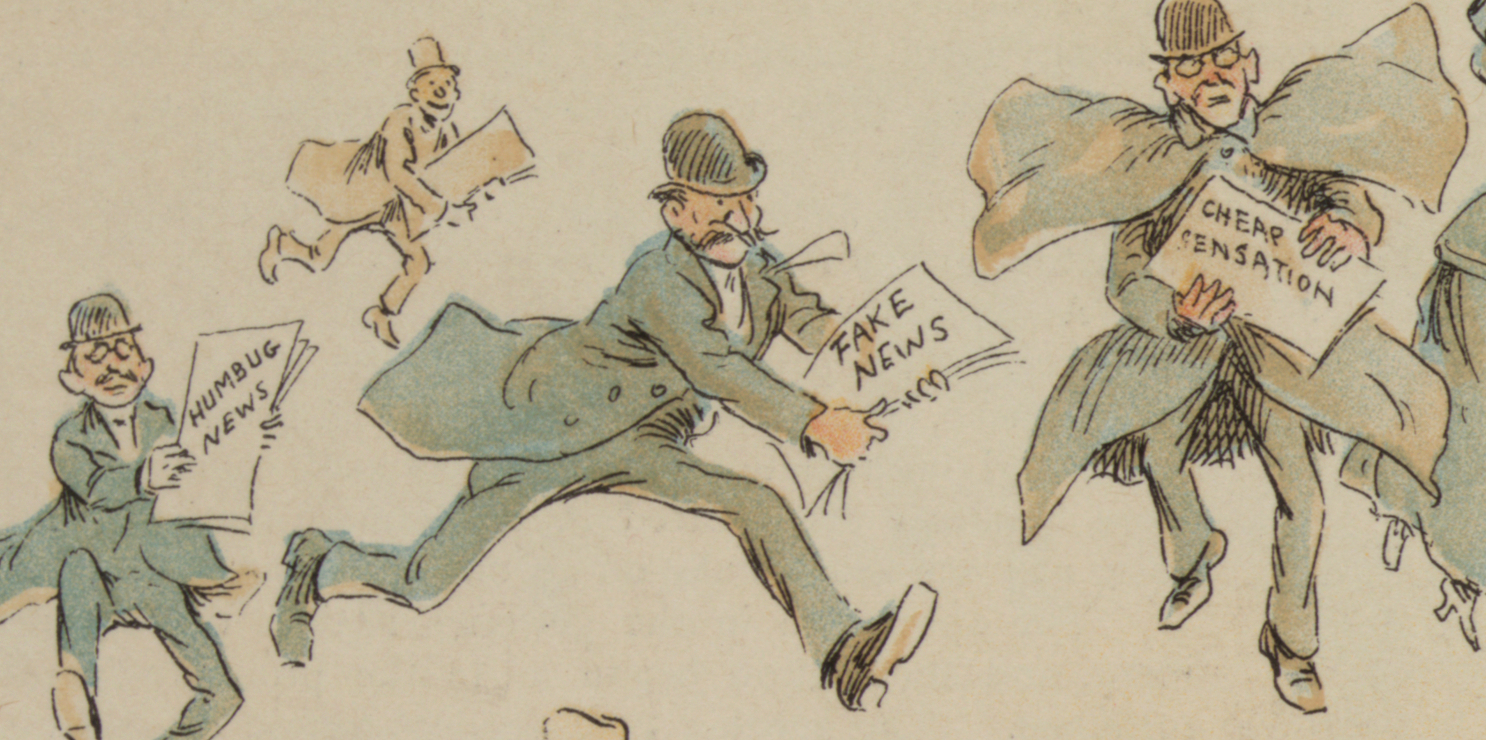
Twentieth century illustration. Courtesy of The Public Domain Review.
The key to any good collaboration is being available and receptive. That was how I approached collaborating with the News Literacy Project (NLP), a nonprofit focused on bringing news literacy and civic education to the US school system in all fifty states. Working with hundreds of thousands of students across the country, the group excels at creating and conveying their message—a skill that I lack, as a technologist.
Our partnership began with my unsolicited email, sent to the contact address on the organization’s website. The CEO responded, and we had an introductory phone call. Then, we tried to shape a regular framework for collaboration. This meant having frequent brief meetings, setting expectations, and figuring out how to best coordinate our efforts. Ideally, there should be a single contact with whom to communicate about and during the collaboration. Once clear lines of communication were established, we set about finding substantive work to do.
Like most nonprofits, NLP doesn’t completely understand what’s technologically possible; I brought together a team to help in this area. When collaborating with a nonprofit, one should leverage one’s industry expertise, on a pro-bono basis, and do this with small, reasonable projects, if possible. One should not supplement the work of a contractor but instead create marginal gains for the nonprofit that are easy to internalize but make a large impact over time.
I’ve worked with NLP for more than two months. Our first collaboration created a new website for the organization, using GitHub, that has no infrastructure costs and is easily updatable. Our second collaboration is more sophisticated: we are researching how to better leverage NLP’s data through a series of efforts, including metric generation and tracking, automated data visualization, and modeling for forecasting and prediction. Making use of data science will lead to better insights that NLP can use to teach more students how to understand the news.
It’s worth noting certain factors that contribute to the success of this kind of collaboration. Paramount is the advantage of living in New York City and being part of one of the most vibrant technological communities in the world. Almost every day, there are multiple hack-a-thons in New York City. If someone posts about an interesting-sounding event on a Tuesday, seventy-five dedicated people will show up on the following Saturday. So collaborators can almost spontaneously gather and share skills to work on a problem for eight hours and walk away with finished products. New York City also has a vibrant civic-technology community, and participants are typically expected to know how to get involved and what to do. Adaptations may be required for collaborating within different contexts. Overall, collaborations can be fruitful when all parties bring their strengths together to work toward a shared goal.



